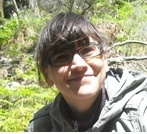Wendt, C.F., Nunes, A., Köbel, M., Verble, R., Matos, P., Boieiro, M. & Branquinho, C. (2021) Ant functional structure and diversity changes along a post-grazing succession in Mediterranean oak woodlands.
Agroforestry Systems,
95, 1217-1228. DOI:10.1007/s10457-021-00648-0 (IF2021 2,419; Q3 Forestry)
Grazing exclusion may be used to promote the recovery of disturbed ecosystems. A promising way for the evaluation of its effectiveness is through the monitoring of key biological groups, particularly those more responsive to disturbance and playing key roles in ecosystem functioning. Ants have been used as ecological indicators as they are abundant, diverse and sensitive to environmental changes. Here, we aimed to evaluate changes in ant taxonomic and functional structure and diversity, using functional groups, along a post-grazing succession in a Mediterranean oak woodland and to understand which environmental variables drive them. The post-grazing succession comprised a chronosequence of grazing excluded sites for 8, 12 and 18 years and a grazed control site. We found that ant species richness, functional structure and diversity increased with years since grazing exclusion: Generalist/Opportunist and the Hot Climate specialists increased in the 18 years grazing excluded site, while the Cryptic Species group increased in the 12 years grazing excluded site. Yet, their responses were not linear over time. Time since grazing exclusion and vegetation structure explained differences in ant taxonomic and functional structure and diversity. The Invasive/Exotic group dominated in all sites, except in the longest excluded site, where it occurred in the lowest proportion. The invasive Argentine ant dominated the grazed site, where it may have led to ant taxonomic and functional homogenization. Our results suggest that the time and changes in habitat structure may favour the recovery of ant biodiversity, although the presence of the invasive Argentine ant species may have slowed it down.






